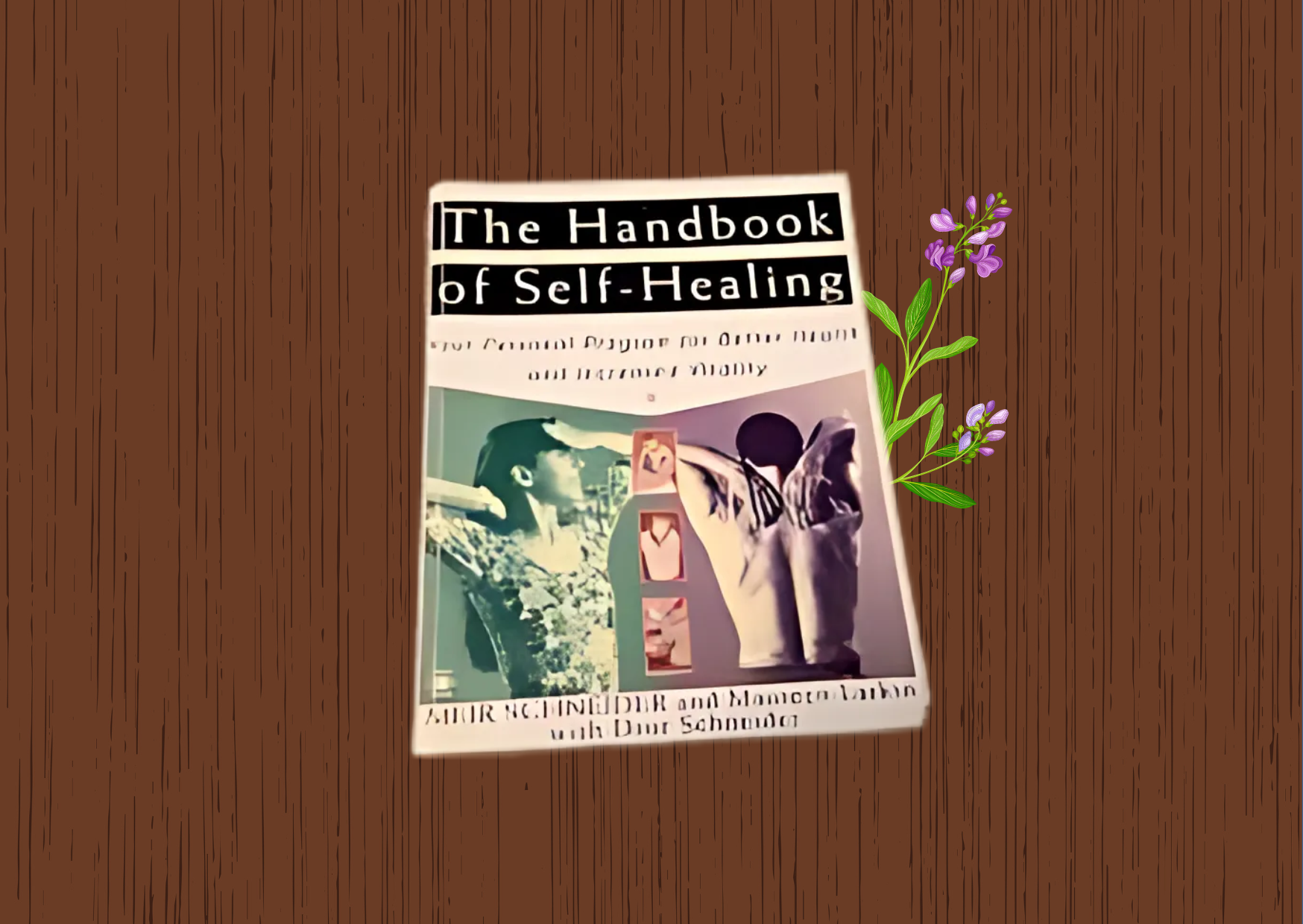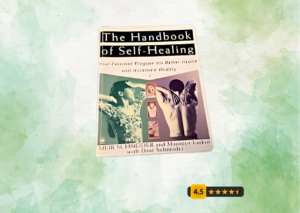Summary of “The Handbook of Self-Healing”
The Handbook of Self-Healing by Meir Schneider, Maureen Larkin, and Dror Schneider is not just a book; it is a gentle invitation to rediscover the innate power that lies within us all—the power to heal, renew, and thrive.
First released in 1994, this timeless work whispers of ancient wisdom while offering practical guidance that remains profoundly relevant today. It is a haven for those who seek a deeper connection to their bodies and a way to reclaim their vitality through the art of self-care.
For anyone navigating chronic pain, seeking solace from stress, or exploring alternative paths to well-being, this book is a guiding light.
A Symphony of Self-Healing Techniques
Within its pages, the book unfolds like a symphony, each chapter a movement that guides the reader through the intricate dance of self-healing.
Schneider and his co-authors weave together a rich tapestry of techniques—bodywork that unlocks tension, mindful breathing that centers the mind, stretches that restore flexibility, and visualizations that calm the spirit.
Each exercise is thoughtfully explained, like a mentor guiding you through a garden of possibilities, encouraging exploration at your own pace. For instance, you might find a breathing exercise to help you unwind after a stressful day, or a simple stretching routine to alleviate back pain.
Unlike rigid programs that demand a single path, The Handbook of Self-Healing celebrates the uniqueness of every individual. It empowers the reader to craft a personal journey, tailored to their own needs.
Whether you are looking to ease the chronic ache of pain, find calm amidst life’s storms, or build strength and flexibility, this book meets you where you are and offers a guiding hand forward.
Stories of Resilience and Renewal
Threaded through this guide are the authors’ stories—tales that shimmer with hope. Meir Schneider’s own journey is the heart of this work, a testament to the miracles that unfold when determination meets belief.
Born with severe visual impairments and declared legally blind, Schneider defied the limits placed upon him. Through the very methods he shares in these pages, he restored much of his sight, turning his life into a living testament to the boundless potential of self-healing.
These personal narratives, alongside other stories of healing and transformation, are like gentle beacons, lighting the way for those who might doubt the power of such simple practices. They are a reminder that within each of us, there lies a reservoir of strength—waiting to be awakened.
For those seeking further inspiration, Life Awakening: Mindful Living Journey offers a wealth of stories about resilience and renewal, guiding readers to find their path of healing.
Language That Flows Like a River
The words within The Handbook of Self-Healing flow with clarity and grace, making even the most intricate concepts feel accessible. There is a rhythm to the instructions, a sense of calm that settles as you read, allowing you to move through the exercises with confidence and curiosity.
The explanations are not only practical but imbued with a warmth that makes the reader feel seen and understood. Even those new to the world of holistic healing will find themselves gently guided, each page an invitation to step further into self-discovery.
A Few Hushed Notes about “The Handbook of Self-Healing”
Yet, as with any enduring work, there are moments where time’s passage can be felt. Some references may seem like echoes from a different era, especially when compared to today’s evolving understanding of alternative medicine.
And for those firmly rooted in the realm of conventional methods, certain ideas may appear as distant and intangible as a dream. But for those willing to open their hearts and minds to the possibility of healing beyond the ordinary, these whispers of another time only add to the charm of the book’s message.
Final Reflections about “The Handbook of Self-Healing”
The Handbook of Self-Healing: Your Personal Program for Better Health and Increased Vitality is more than a guide—it is a companion on the path to reclaiming one’s inner light. It is a book that speaks to the deepest parts of us, those who yearn for renewal and crave a sense of wholeness.
For anyone facing the weight of chronic pain, seeking solace from stress, or simply wishing to feel more alive in their own skin, this book is a balm, a promise that better days are within reach.
Pros:
- A beautifully varied and inclusive approach to healing
- Personalized guidance that honors each reader’s journey
- Stories that uplift and inspire
- Clear, lyrical instructions that soothe the mind
Cons:
- Some references may feel like relics from the past
- Concepts may challenge those accustomed to purely conventional approaches
If you are ready to embrace the mystery of the body’s ability to heal itself, and if you yearn for a guide that speaks to the soul as much as it does to the mind, then The Handbook of Self-Healing awaits you.
Let it be your companion as you step into a world where health and vitality are not distant dreams, but treasures waiting to be rediscovered.
FAQs About “The Handbook of Self-Healing”
Q: Who would benefit most from reading The Handbook of Self-Healing?
This book is ideal for anyone who feels a deep desire to reconnect with their body, especially those facing chronic pain, and stress, or seeking alternative healing methods. It’s perfect for beginners in holistic practices as well as seasoned practitioners looking for gentle, heartfelt guidance.
Q: What kind of exercises and techniques are included in the book?
The book offers a wide range of self-healing techniques, including bodywork to release physical tension, mindful breathing exercises for relaxation, simple stretches to increase flexibility, and visualizations that help calm the mind and open the heart. Each technique is explained with clarity, allowing readers to explore at their own pace.
Q: Is the book suitable for those new to holistic healing?
Absolutely. Even if you’ve never tried holistic methods before, the authors’ compassionate and clear instructions make it easy to follow. It guides readers gently, turning complex concepts into simple, approachable steps toward self-care.
Q: Are the techniques in this book backed by scientific research?
While the book draws from personal experiences and time-honored methods rather than modern scientific studies, it offers a deeply human perspective on healing. It’s about rediscovering your innate ability to connect with your body and foster a sense of well-being.
Readers who appreciate both ancient wisdom and personal transformation stories will find it enriching.
Q: How does The Handbook of Self-Healing compare to other self-care books?
Unlike many self-care guides that follow rigid programs, this book encourages a personalized approach. It respects your unique journey and invites you to explore different techniques that suit your needs.
With its blend of storytelling and practical exercises, it feels less like a manual and more like a companion on the path to better health.
Q: Can this book be helpful for those who already practice conventional medicine?
Yes, it can be a beautiful complement to conventional methods. For those seeking to blend traditional and alternative approaches, this book offers gentle practices that can support the body’s natural healing processes. It’s about finding balance and integrating practices that bring peace and vitality to your everyday life.


